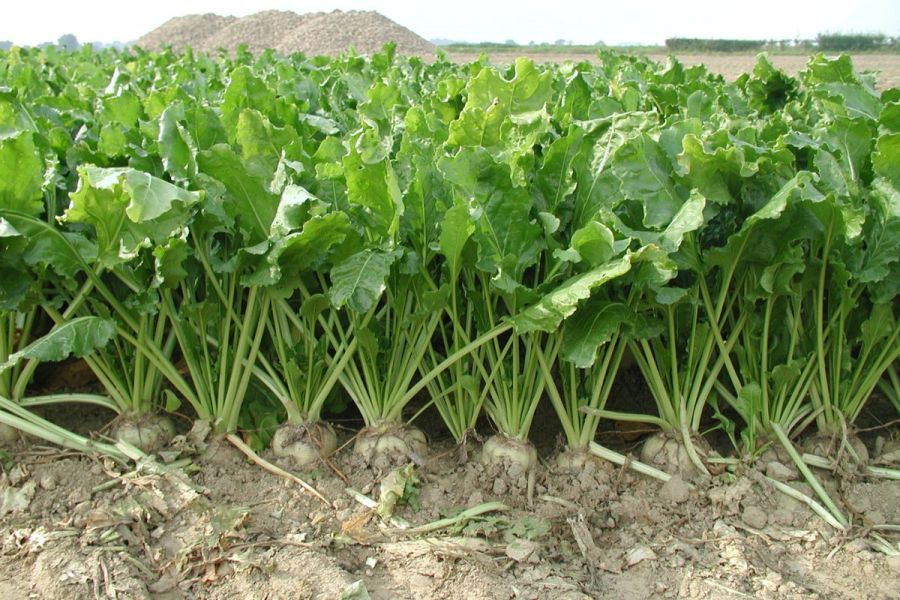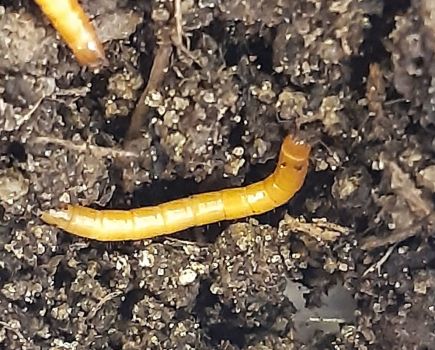SESVanderHave is a leading player in the global sugar beet industry. It specializes in every aspect of sugar beet seed including breeding, research, production and processing of seed through to agronomy and sugar processing. CPM went to meet general manager Ian Munnery at the company’s Lincolnshire office.
SESVanderHave was created in 2005 when the Florimond Desprez Group acquired the Sugar Beet assets of Advanta. Those originated from the merger of Belgian seed company SES Europe with the Dutch company DJ Vanderhave. Between them, the two companies had almost 200 years of experience and expertise in sugar beet production. SESVanderHave UK Ltd was incorporated in 2012 in Wellingore, Lincolnshire, less than two miles from the original Advanta breeding station at Boothby Graffoe. Then in 2020 it relocated to new larger premises at Heath Farm the site of the former RAF Wellingore.
Ian takes up the story: “The UK team has grown considerably over the last 11 years, we now manage trials across the UK as well as wider commercial and technical group roles globally. As well as delivering trials for the UK and northern Europe for breeding, research and development, the team also provide many contract trials for our partners.”
“Sugar beet only came into being as a crop due to the Napoleonic wars as Nelson blockaded the export of sugar cane to France and Napoleon drove the development of sugar beet as an alternative. It is a little ironic to highlight that nowadays Norfolk; Nelsons county dominates UK sugar beet production. Sugar beet therefore remains an important crop across Europe, and globally we supply our blue pelleted seed to grower in around 50 countries, planting over 1 million hectares. In context the entire UK plants around 95,000 hectares each year. Our presence in every country where sugar beet is grown means that our experience of diseases, pests and environmental issues can be shared, allowing us to anticipate threats and deliver solutions. One major difference between us and the rest of the industry is that we are a privately owned company and invest heavily in research and development ensuring we keep ahead of the curve when it comes to research and innovation; seed production is a case in point.
“Sugar beet seed production for the UK is largely conducted in south west France and north east Italy; climate change is starting to change this so we may have to modify our way of thinking. For example in the UK we hit 43oC in the shade last year, in France it was a lot hotter. So, we need to consider when you lay a delicate little sugar beet seed in a swathe to dry and blast it with such temperatures, it risks cooking it; damaging the seed and reducing our seed crop yields or quality. Similarly, seed production this year in Italy was affected by severe flooding that many of us saw on the news; we were lucky it didn’t affect us too badly, but it has impacted some. It was not just that flooding washed away some seed crops, a greater threat was the impact on flowering of the male and the female plants, these need to be matched up (nicked), if not you risk reducing seed yields and potentially contamination from other beet pollen. Collectively we need to think strategically when it comes to seed production. Displacement of seed supply and volatile markets following the war in Ukraine make for a challenging supply chain for the seed industry.
“For this reason we also need to be thinking about producing seed in the UK again, not just to mitigate climate risk and ensure security of supply, but also because the Precision Breeding may enable production and use of precision bred seeds long before the rest of Europe, both for domestic and export markets.”
There are other mounting problems for the British sugar beet industry at the moment; the industry is under threat from foreign imports, increased costs and as a minor crop it lacks the scale of investment or government support as we see in other markets, suggests Ian.
“However, sugar beet remains critical to crop diversity in the UK. Despite advances in genetics that have delivered yield increases of 1.5% year on year for the last 20 years, we are still fighting for the security of British sugar production and battling pests, weeds and diseases by breeding varieties for the unique maritime climate of the UK.”
“Sugar beet is a good news story compared to cane, says Ian. “It uses around five times less water than cane, requires fewer food miles and important to maintain rotations; so it has an excellent carbon footprint and sustainability credentials. Unfortunately, this has not stopped the threat of competition from cane producing nations which is causing investment in the sector to shrink in the UK.
“Genetics and plant breeding can offer solutions to further improve the profitability of the crop. By breeding varieties that can reduce the reliance on chemistry, nitrogen and energy use for processing, whilst increasing yields, we can help mitigate the threat that imports pose. More robust varieties are the answer to the problem, but breeders need the security that the UK market can be sustainable in order to invest and deliver a decent return on investment. After all it takes us 10 years to breed a variety and 3 years to produce the seed – so we’re very much looking at the long term.
“Further efforts are also being made to increase support for UK sugar beet production and it is hoped that by advocating the importance of sugar beet to crop diversity and the economy, that a sustainable trade in British sugar can be maintained.”
Breeding research and development is key to maintaining the competitiveness British sugar industry as an important fixture in British agriculture and SESVanderHave are playing a key part in this process. “We are now managing around 30,000 trial plots on around 30 hectares across the UK, across Europe we have around 150,000 trial plots,” says Ian. “Our UK plots are drilled with a precision Monosem drill and harvested with the only mobile tare house operating in the UK which gives considerable flexibility and speed to wash, weigh and produce brei instantly.
The harvester is basically a mobile tare house that has something of Triggers broom about it, as it is constantly being updated and improved. We have a number of them across Europe. Three rows of beet are topped at the front of the machine from where it goes through a set of rotating ‘ladies fingers’ which corkscrews the beets out of the ground. It then comes up the elevator where it is weighed to get a dirty weight, before it is washed with a high pressure washer to clean off all the dirt. It is then put on the table where any stones are picked out to give us a clean weight; wet Lincolnshire limestone looks just like sliced beet so it is still a manual job for our trials team. How the soil sticks to the root is an important factor in varietal choice and why the UK has some of the lowest dirt tares in Europe. It then goes through a set of spinning saws, which turns the beet into pulp which is then put into trays and instantly frozen. “In recent years we have incorporated a near infrared spectroscopy (nirs) unit on the harvester,” says Ian. “This give us the sugar content of each sample as we harvest. All the data is then beamed straight back to the lab. The harvester is fitted with GPS and is self steer, so the harvester does not stop but more importantly greatly improves trial accuracy with all operations operated on GPS. On a good day we can harvest and analyse 700 plots. It is essentially a numbers game to get sufficient data from a range of soil types and locations to evaluate parent lines and commercial hybrids. It is time critical, because in September/October we need to be planting the seed crops and make selection decisions about the best varieties to sow in the coming years. To make good business decisions we need good data from our trials; so we use 2023 harvest data to make decisions for planting in spring 2024
Whilst this may sound like an obvious strategy and investment, it is frustrating to know that whilst cereals and oilseeds growers have benefited from combine yield maps and NIRS onboard for many years, sugar beet growers and harvesters still lack this capacity. Mapping yield at farm level against inputs, varieties and both biotic and abiotic threats at scale will be the next big challenge and opportunity given the limitation and costs of sugar beet trialling. ”
“The addition of drones for plant counts and other analyses mean we are keeping our growers and processors at the forefront of the UK market. It also allows us to benchmark our trials performance with actual commercial performance from our current portfolio of varieties and technologies as well as a strong pipeline of new genetics to increase resilience for UK growers. We test our varieties under commercial conditions across the beet growing area, not just breed for success in trials”
This article was taken from the latest issue of CPM. Read the article in full here.
For more articles like this, subscribe here.
Sign up for Crop Production Magazine’s FREE e-newsletter here.




